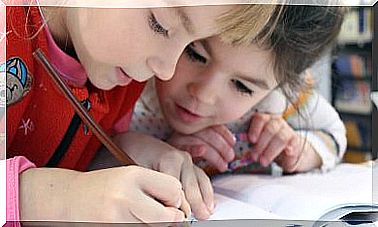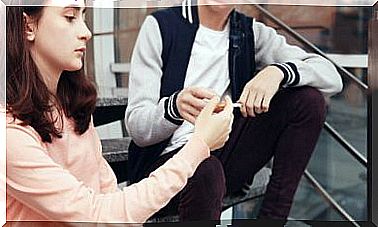Teach Children To Make Outlines To Study

Making diagrams to study is a good way to synthesize the information in order to better remember the concepts and knowledge. It is convenient to teach this study technique to children from an early age, so that they learn to study effectively and efficiently.
In this sense, it must be taken into account that the diagrams are just one more step that must be carried out in the complex task of studying. Thus, the following five study phases can be distinguished:
- Comprehensive reading.
- Underlined.
- Synthesis.
- Memorization
- Self-assessment.
Teach children to make diagrams to study
In the study, when the synthesis phase is reached, it is necessary to use information organization and elaboration strategies that allow the content to be modified to make it easier to assimilate and memorize. For this, schemes can be made.

The diagrams relate and represent, visually and clearly, the main and secondary ideas of a text. Therefore, the great advantage they have, compared to other synthesis techniques, such as summaries, is that they allow you to capture relevant information at a glance. But different types of schemes can be made, depending on what needs to be studied:
- Comparatives. They are used to compare characteristics and easily observe the information.
- Hierarchical. They are those used to organize and classify the ideas in a text, integrating some concepts into others.
- Sequenced. Necessary to order the information sequentially, based on various variables (the passage of time, changes in shape, changes in characteristics, etc.).
It is important to pass on this knowledge about schematics to children. But, to learn this study technique, it is not enough to know the theory, it also requires a lot of practice.
Thus, it is convenient that parents accompany the children during the study sessions and help them develop the first diagrams, so that, little by little, they can carry them out independently.
Characteristics of a good scheme
It should be noted that, to make a good scheme, you have to follow several steps:
- Read the text carefully.
- Select and underline the main and supporting ideas.
- Think of a title that is a synthesis of the text.
- Choose the type of scheme to be carried out.
- Divide the text into general sections and subsections.
- Put each idea in a different section and formulate it briefly and precisely.

Likewise, it is necessary that the schemes that are carried out to study meet a series of characteristics:
- All the main ideas have to be integrated.
- The main ideas of the text should be highlighted and clearly related.
- It has to follow a logical structure, with the main and supporting ideas well organized.
- The presentation should be clean so that the content can be understood quickly.
- It should be written in almost telegraphic language, using keywords or short and direct phrases.
By following these tips, children can learn to develop appropriate schemas for good school performance. Thus, students can get, at a glance, a general idea of the study topics. Which is beneficial for acquiring, assimilating, understanding and remembering information easily. This takes work, time, and effort, but it’s worth it!










